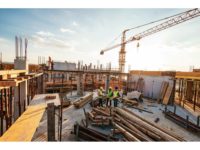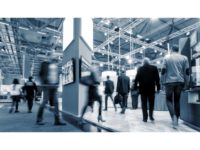Building Enclosure had the opportunity to speak with John “Ozzie” Nelson Jr., NELSON Worldwide's CEO, on the impact and outlook of COVID-19 on the AEC industry.
1. How has COVID-19 already altered the ways in which AEC firms approach their projects?
One word sums up the initial response: Virtual. Virtual in the ways that we perform work from home, in how we interface with our clients and partners (including end of the day zoom cocktail parties), and in the ways that we are using 3D cameras and walk-through technology to continue to advance client decision making, during this crisis.
2. How can firms continue to be proactive across market sectors during this unprecedented time?
NELSON Worldwide has expertise in so many industries, so we are taking a unique approach with each practice to actively problem solving for those clients that are facing challenges. With Retail, Workplace, and Hospitality clients, the focus is on offering smaller initiatives they can do in the interim to set themselves up for success post-pandemic. Meanwhile, with those clients that are experiencing a higher volume of demand, such as Healthcare and Industrial, we’re offering both short-term and long-term solutions.
We think one long-term solution in particular will be repurposing the significant amount of dark anchor spaces throughout our country, by transforming the vacant spaces into outpatient centers or other health and wellness related facilities. This will help healthcare systems expand their services into high foot-traffic areas to not only meet pressing needs that might arise after COVID-19, but also to serve our growing population of baby boomers.
We’re also working with some clients to meet current healthcare needs by assisting with design and permitting of COVID-19 screening tents on hospital campuses. These temporary installations are being placed outside of emergency departments and are meant to triage and screen anyone entering the hospital to prevent infection.
3. How is NELSON responding to the pandemic?
Since the firm’s inception, NELSON Worldwide has been an advocate of producing spaces that support health and wellness standards. Whether it is in our Healthcare or Workplace practices, the wellbeing of the occupants of our spaces has always been a main component of the process. With a global pandemic on our hands, it is up to us to take our expertise to the next level through the use of healthy materials and carrying out the sensitive logistics for adaptive reuse projects for spaces that may double as healthcare facilities—helping many at the same time.
During this unprecedented time, we are shifting our business model to better prepare ourselves for the future, and we wholeheartedly believe in our vision to Boldly Transform, and that means taking proactive measures to not only weather this storm, but emerge stronger for our clients, partners and teammates
4. What are some lessons the design industry is learning in response to this pandemic?
Germ mitigation will become a focus in design, including looking at more “zero touch” technology and solutions. Having greater access to sanitization stations, reliance on automatic doors, more digital signage, recyclable products, and easy-clean fixtures.
Consumer transparency will be just as important as the solutions themselves. There will be a surge in environmental graphic design, informing employees, guests, and the public of the procedures and processes in place to protect them. We want to partner with our clients to help create environments where consumers, employees, or guests feel safe, welcome, and reassured.
In the long-term, smart buildings become the new normal. Automated lighting systems that can sense and react to the movement and room occupancy. Voice command and facial recognition will replace touch-screen technology. Separate HVAC systems will ensure clean air flow throughout the space, and smart glazing technology will be implemented on the exterior of buildings to better adjust to outdoor conditions
5. What are some design movements that you foresee emerging following the pandemic?
With most Americans adjusting to mandatory stay-at-home guidelines, consumers are relying on services once thought to be indulgent amenities. These conveniences include same-day grocery delivery, curbside pick-up, virtual conferences or healthcare appointments, live streaming fitness offerings, and even direct-to-consumer movie screenings. As consumers become more accustomed to these elevated services, their expectations will shift from novel to anticipated, and these offerings will become table-stakes.
As the pandemic subsides, companies will also need to think about being more socially responsible with consumer or employee engagement. Brands will need to consider how they can bring their products and services to consumers through a more personalized experience in a smaller-square footage offering. For retail, this could include appointment-only stores, similar to Nordstrom Local. Within the workplace, we could see smaller conference spaces with more breathing room between attendees and more outdoor space for better airflow.
As industrial continues to grow during this pandemic, back-of-house spaces will become increasingly important. From grocery stores, to restaurants, to home improvement, these consumer-facing environments will need more storage space than ever before for delivery, curbside pick-up, and ecommerce fulfillment.
Workplace and the home will be forever changed and connected. Remote working is the great equalizer, we are now used to seeing our teammates, clients—and even local news personalities—at home with less than perfect backdrops or lighting. This is transparency born out of crisis, that will set the stage for future work to happen anywhere, at any time, without apology. The workplace will need to accommodate much more flexibility as people question daily long commutes, when work can be seamlessly done from home.
6. Any insights into the future and how this will make the AEC industry stronger?
We have the unique opportunity to learn from this pandemic and come out even stronger than before. As architects and designers, we can observe the designs that have failed us during COVID-19 and turn them into great successes in the future. Our future design solutions have the chance to withstand even the most unexpected circumstances.




